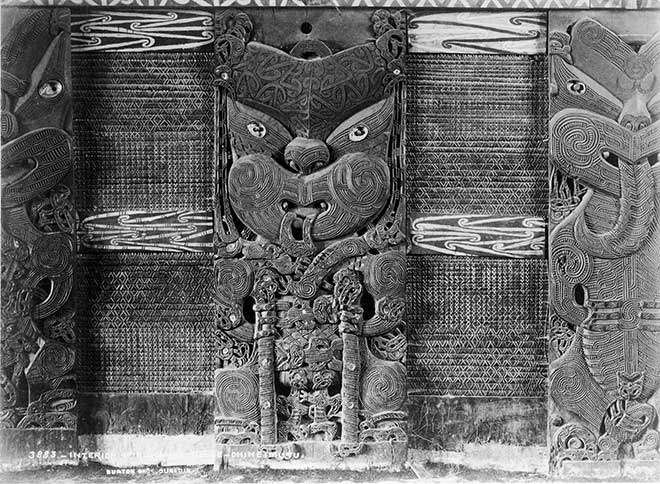
This poupou (carved wall post) represents Tamatekapua, the captain of the Arawa canoe. He is shown standing on pou toti (stilts) since, according to legend, in his homeland of Hawaiki Tamatekapua used stilts to steal fruit, and was forced to find a new home in New Zealand. This poupou was made for the great whare whakairo (carved house), also called Tamatekapua, built in 1878. Some of its carvings were recycled from earlier houses, and may be much older. The whare whakairo stands at Papaiouru marae in Ōhinemutu, Rotorua. It was demolished in 1939, but was rebuilt and then reopened in 1943.
Using this item
Alexander Turnbull Library, Burton Brothers Collection
Reference:
PA7-05-36
Photograph by Burton Brothers
Permission of the Alexander Turnbull Library, National Library of New Zealand, Te Puna Mātauranga o Aotearoa, must be obtained before any re-use of this image.







Add new comment